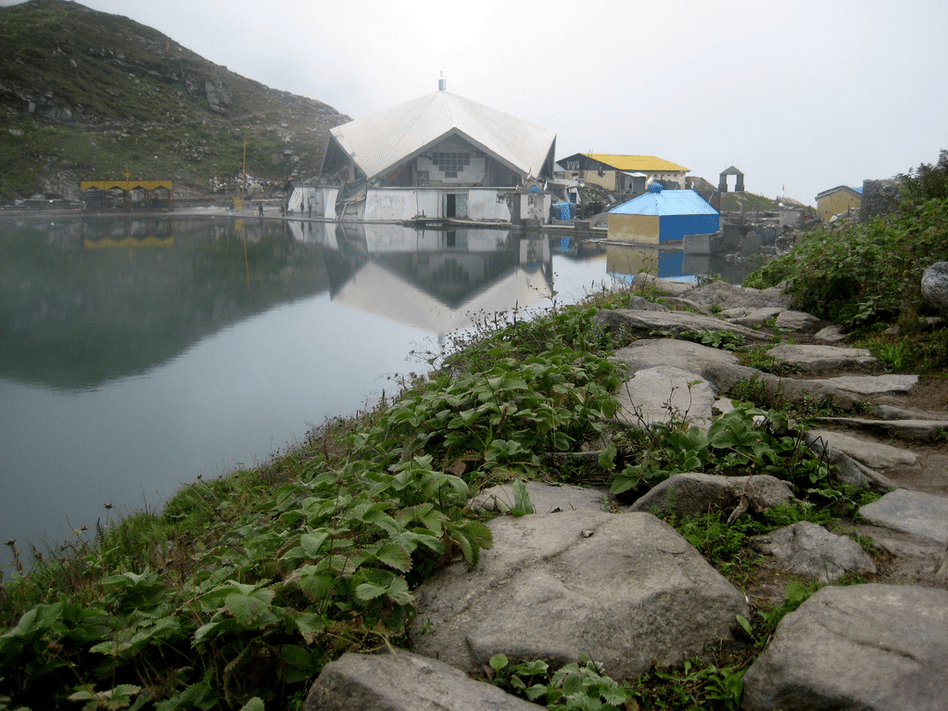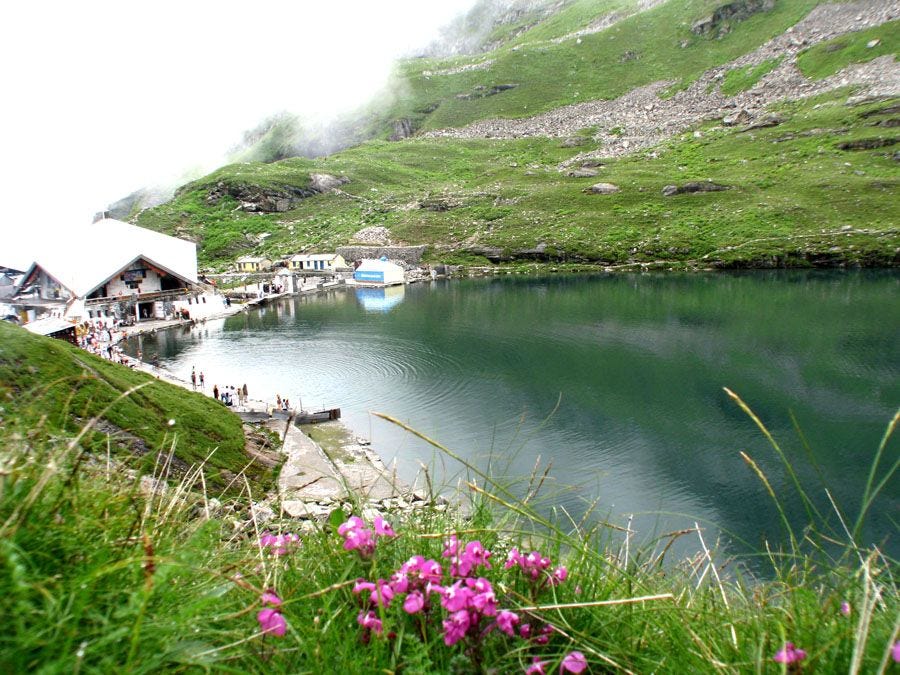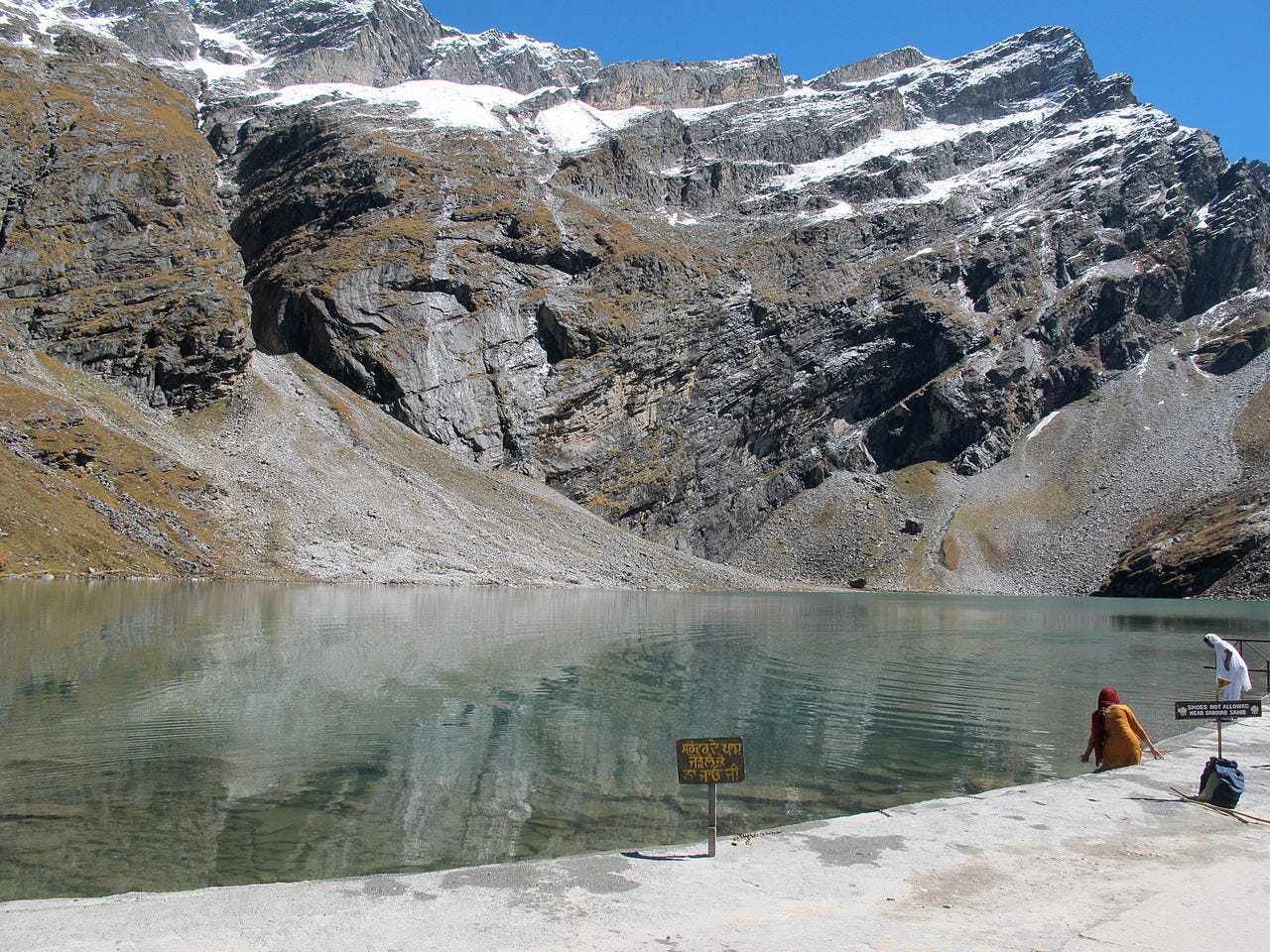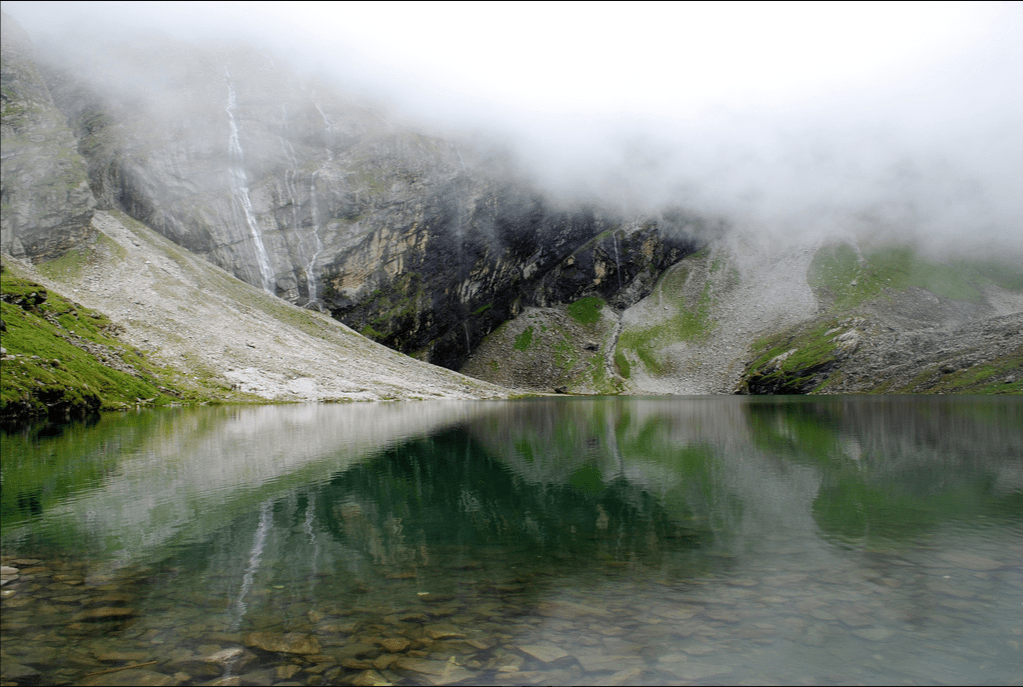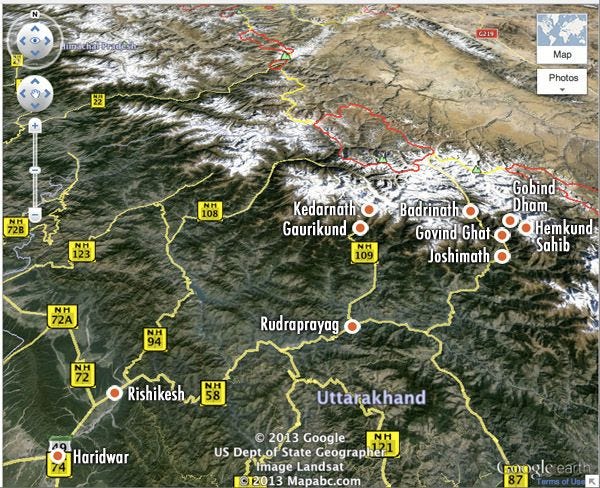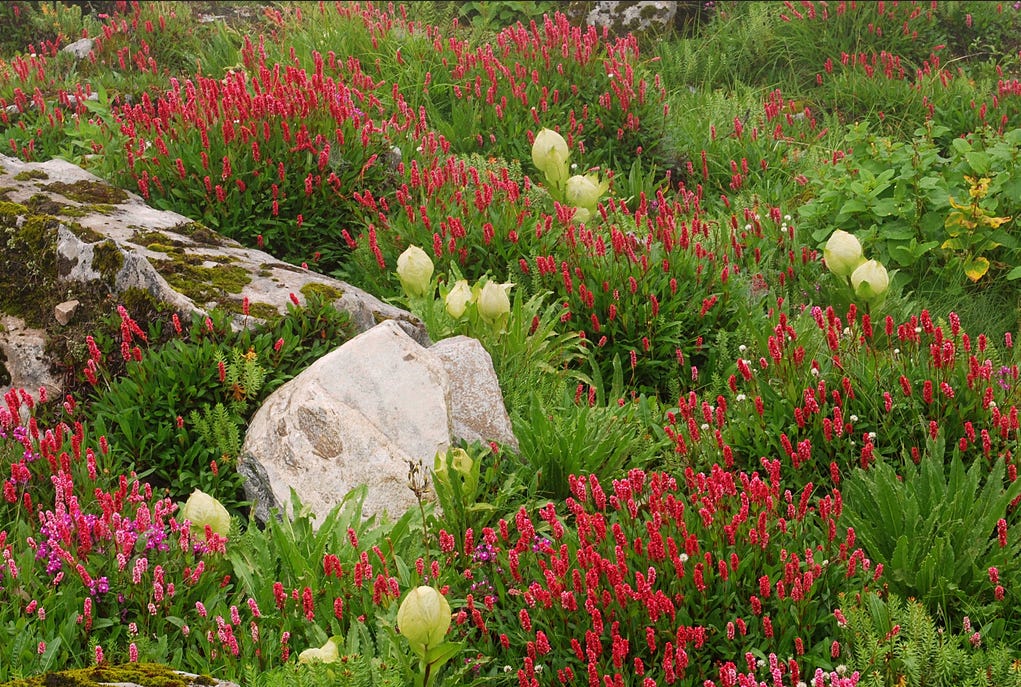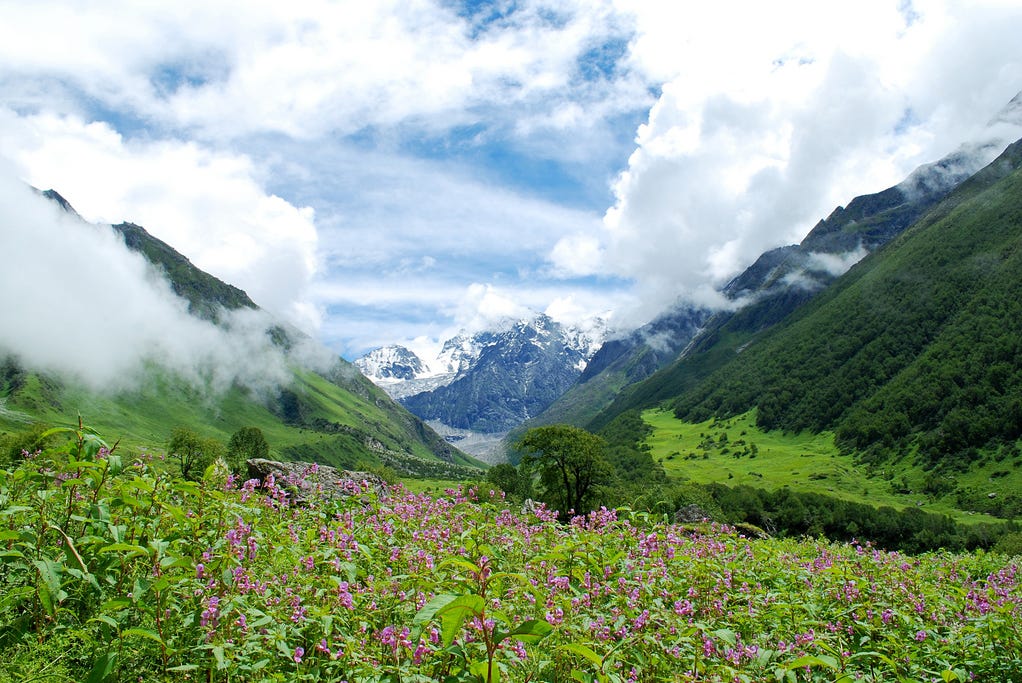Spiritual Destinations: Hemkund Sahib, where Guru Gobind Singh Attained Enlightenment
I have started a five set series of posts on being tagged by my beautiful and very talented wife, Archana, to write picture posts. This series is about the 5 spiritual places that I would like to visit with Archana. This is the fourth one on Hemkund Sahib in Uttarakhand, India.
Hemkund Sahib is a place of utter tranquility but of very high intensity. It is a place where some very fierce and intense beings have meditated to attain their highest possibility – the Enlightenment.
In Dasam Granth, Guru Gobind Singh writes about how he attained Enlightenment.
Ab mai apni katha bakhano
tap sadhat jih bidh muh ano
Hemkund Parvat Hai Jahan
Sapat Shring sobhit Hai Tahan.
Sapat Shring Tahan Nam Kahava.
Pandu Raj Jahan Yog Kamaya.
Tahan Hum Adhik Tapasya Sadhi.
Mahakal Kalika Aradhi.
Ehi Bidhi Karat Tapasiya Bhayo.
Dwai Te Ek Rup Hwai Gayo.
In this verse, the Guru discusses his “katha” or story as to how he did sadhana (tap) on the Hemkund mountain, which is at a place which was called Sapat Sring. Now, this place is also adorned by Sapat Sring. Sapat is seven obviously but the meaning of Sring is unclear.
This place, however, is where Guru Gobind Singh did his meditation, it was also the same place where King Pandu had done his sadhana as well, as discussed in Mahabharat. The 10th Guru says that this is where he had done most of his Tapasya.
In his sadhana he invoked Mahakal and Kalika (another name of Goddess Kali) as aradhya – or his deities. Mahakal is the fierce form of Shiva – or Mahadev, whom Guru Gobind Singh refers to in Benti Chaupayee and other places as well. Kali, incidentally is also the fierce form of the Goddess. Very few Yogis use this path, and do so for certain reasons.
Guru Gobind Singh then states that it was this method of sadhana that took him from the state of Duality to Advait or Non-Duality. In other words, this is how he attained Enlightenment.
Hemkund, therefore, is the place where Guru Gobind Singh attained Enlightenment. That is the most important aspect of this place. This place has been associated with many other Yogis and Enlightened beings as well. It is said that even Lakshman, Shri Ram’s brother, did his sadhana here. He – Lakshman – incidentally, was also known as a fierce being, quite like Guru Gobind Singh himself.
Search for Hemkund Sahib
The credit of finding Hemkund Sahib for the Sikhs goes collectively to three gentlemen – Bhai Veer Singh, Sant Sohan Singh, and Havaldar Madan Singh. Bhai Veer Singh compiled evidence from Guru Gobind Singh’s Bachitra Natak, Kavi Santokh Singh’s Suraj Prakash and Pandit Tara Singh Narottam’s descriptions in Sri Guru Tirath, into his treatise Sri Kalgidhar Chamatkar. There he described the place which he thought was Hemkund. Sant Sohan Singh, a retired Granthi from the Indian Army and then working in a Gurudwara in Tehri Garhwal, set out to search for the place where Guru Gobind Singh had meditated in 1933. He didn’t succeed that year, so he tried again the next year. The story of how he found the place and started the construction of the Gurudwara there with help from Havaldar Madan Singh is legendary and worth reading.
In Pandukeshwar, near Gobind Ghat, Sant Sohan Singh made inquiries of the local people about the location of the place where King Pandu had done his penance. It was they who said that the lake known as Lokpal might fit the description of Hemkunt Sapatsring. In an account told by the villagers, he met with some Bhotia women who were on their way from Badrinath to Lokpal to celebrate a festival. He asked if he could accompany them. In another version, he climbed alone to the shore of the small lake surrounded by rocky peaks. Accounts of what happened next also vary. What is clear is that Sohan Singh felt certain that he had found the very place where the Guru had meditated in his previous life.
In his excitement to spread news of his discovery, he went first to Mussoorie, a hill station in Uttarkhand. He wanted to approach Sikh authorities in the hope that a memorial could be set up beside the lake. He spoke to the president of the gurdwara there, but his story met with skepticism. He moved on to Amritsar and announced his discovery before the Shiromani Gurdwara Parbandhak Committee. The authorities there also did not listen. He then decided to approach Bhai Vir Singh, whose book had first inspired his search.
In the winter of 1934, Sohan Singh met with Bhai Vir Singh in Amritsar. At first the scholar was not convinced, and asked many questions about Sohan Singh’s find. When at last he felt satisfied that the place fit Guru Gobind Singh’s description, Bhai Vir Singh committed himself to the cause of developing of Hemkunt. He gave Sohan Singh 2,100 rupees with which to buy supplies to start construction of a small gurdwara on the shore of the lake, then he went on to publicize the discovery of Hemkunt and to collect and manage further funds for its development.
Early in 1935, Sohan Singh was purchasing building materials in Mussoorie when Modan Singh, a havaldar from the Survey Department, approached him and asked him what he was preparing to build. Sohan Singh explained that he had found the place where Guru Gobind Singh had meditated in his previous life, and Modan Singh asked if he might accompany him to the site. They went together to Hemkunt that same year. In Pandukeshwar they hired a contractor to oversee the construction. They obtained permission from the local people, and then, accompanied by local men, they went to the lake and started work on a ten by ten foot stone gurdwara. The construction of the gurdwara was completed the following year. The Sikhs also had their contractor enlarge the ancient Hindu mandir which stood on the shore of the lake.
Havildar Modan Singh retired from the military in 1936 after deciding to dedicate the rest of his life to the service of the Guru’s tap asthan. In 1937, the Guru Granth Sahib was installed in the hut on the shore of the lake, which became the site of the highest gurdwara in the world. In 1939, Sant Sohan Singh died, but not before entrusting Modan Singh with his mission to continue the development of Hemkunt Sahib.
Location and How to get there?
The place is very beautiful. It is near Gobindghat near Joshimath, in the Chamoli district of Uttarakhand. It is at a height of 15,197 feet and inaccessible from October through April as the place is surrounded by glaciers. In May, some Sikh pilgrims come for Kar Seva to clear and repair the path to the Gurudwara.
#HemkundSahib is where Guru Gobind Singh attained to enlightenment #Sikhism Click To Tweet
The trek to Hemkund starts from Gobindghat and this 13 km journey goes through village Ghangaria – also called Govinddham. Here you can stay at a Gurudwara or few local hotels and camp grounds with tents and mattresses. From here there is a 3,600 ft climb on a 6-kilometre long stone paved path that finally leads to Hemkund.
No one is allowed to stay overnight at Hemkund, so you need to start your journey back to Gobindghat by 2 pm, so as to be able to reach there before nighfall.
You can go to Rishikesh or Haridwar and take a bus to Gobindghat from there.
Valley of Flowers
Just 3 kms from Gobinddham is the Valley of Flowers, a National Park declared by the Government of India. This 5 km stretch of valley is full of beautiful wild and naturally occurring flowers. It is part of the Nanda Devi biosphere. The best time to visit here is July and August.
Image Source: view of gurudwara, Hemkund lake, Gurudwara in front of lake, Pilgrims going across the Hemkund Glacier, Hemkund Lake in Sept, Gurudwara Hemkund Sahib, Enroute to Hemkund Sahib, Wild Flowers on way to Hemkund Sahib, Valley of Flowers, Valley of Flowers Panorama, Hemkund Map





